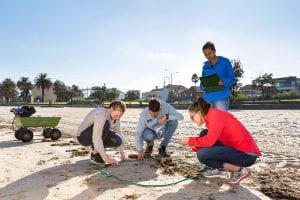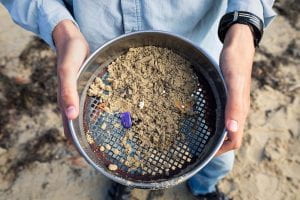Communities Monitoring and Understanding Microplastics
This project was intended to help the Port Phillip EcoCentre establish a long-term monitoring
program to track microplastic pollution in Port Phillip Bay. We trialled, assessed, and designed
an implementation plan for the Baykeeper Beach Litter Audit at nine pre-selected sites. We
collected preliminary data and developed informational guides, instructional videos, and
promotional flyers to recruit and inform citizen scientists. The monitoring program has potential
to serve as a tool for management of the bay over the next fifty years.
Media from the project:

Plastic pollution is a complex problem. The chemical properties of plastic make it a threat to
marine biodiversity when it is improperly disposed of. This project assists the Port Phillip
EcoCentre, which has been conducting litter audits across streets, beaches, and rivers in order to
determine levels of plastic pollution in Port Phillip Bay’s catchment area. This project compiled
litter audit, human, and environmental data into a Geographic Information Systems map to
visualise the data, facilitate its analysis, and enable communication with the public and
government. The visualisation was analysed for correlations between pollution levels and factors
which will impact waste management policies and source reduction plans on the local and state
level.
Microplastics are a growing problem worldwide, and their effects are only starting to be
understood. Our goal was to produce a beach monitoring method that can help community
groups in Iceland track changes in microplastic pollution. We tested multiple methods from
previous studies and combined aspects into one method that is time efficient, simple, and low
cost. We also developed an easy to use, consistent verification test. The final method is an ideal
way for community scientists to monitor microplastics in beach sand. To keep Iceland’s shores
clean and marine ecosystems healthy, monitoring microplastics will be the first step in
understanding plastic pollution.








